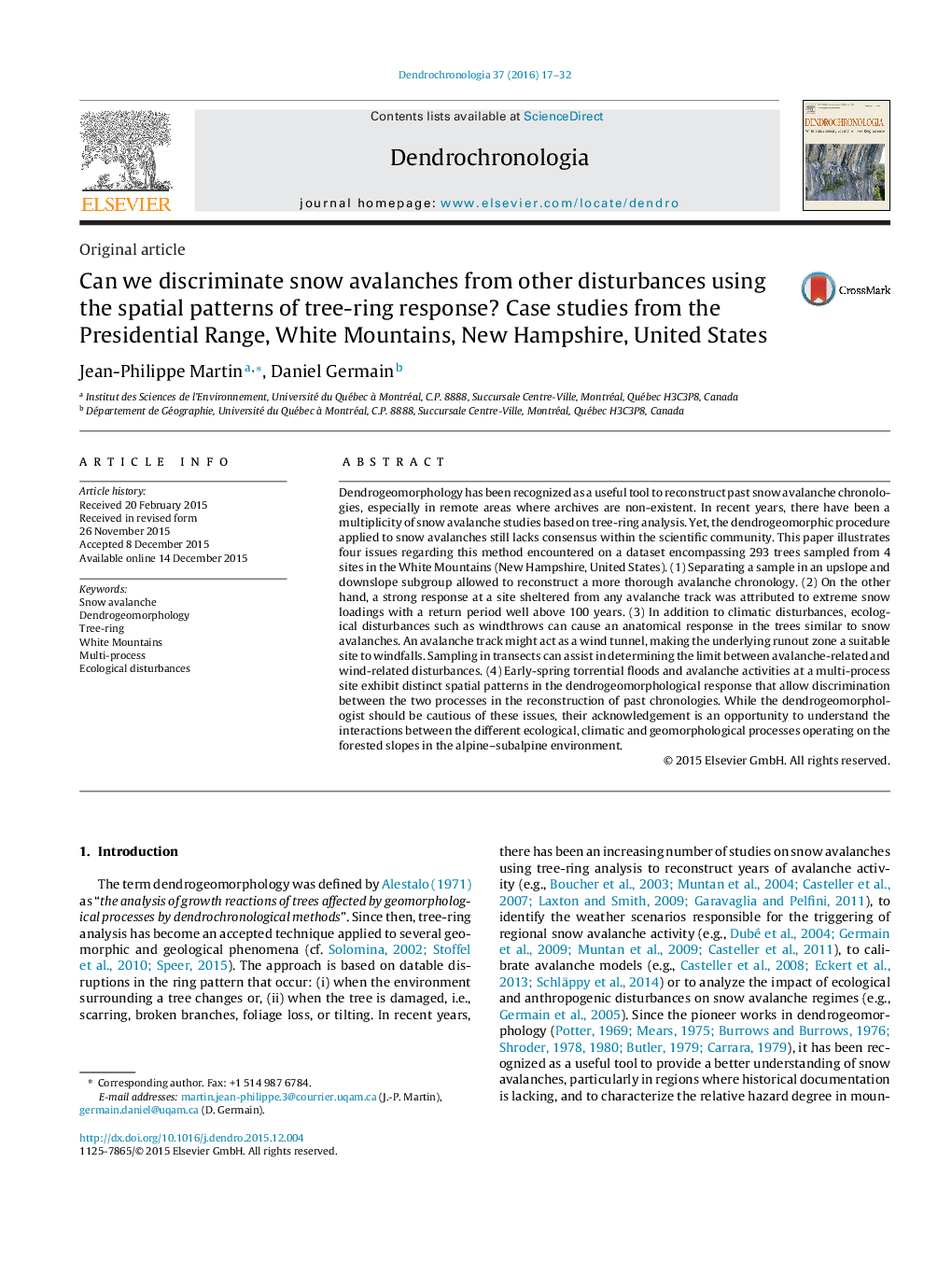| Article ID | Journal | Published Year | Pages | File Type |
|---|---|---|---|---|
| 85543 | Dendrochronologia | 2016 | 16 Pages |
•We present a dendrogeomorphological investigation of snow avalanches on Mount Washington.•Higher and smaller magnitude events can be isolated by considering an upslope and a downslope subsamples as independent.•Spatial patterns in the response allow to discriminate the climatic, ecological and geomorphic signal from avalanches.
Dendrogeomorphology has been recognized as a useful tool to reconstruct past snow avalanche chronologies, especially in remote areas where archives are non-existent. In recent years, there have been a multiplicity of snow avalanche studies based on tree-ring analysis. Yet, the dendrogeomorphic procedure applied to snow avalanches still lacks consensus within the scientific community. This paper illustrates four issues regarding this method encountered on a dataset encompassing 293 trees sampled from 4 sites in the White Mountains (New Hampshire, United States). (1) Separating a sample in an upslope and downslope subgroup allowed to reconstruct a more thorough avalanche chronology. (2) On the other hand, a strong response at a site sheltered from any avalanche track was attributed to extreme snow loadings with a return period well above 100 years. (3) In addition to climatic disturbances, ecological disturbances such as windthrows can cause an anatomical response in the trees similar to snow avalanches. An avalanche track might act as a wind tunnel, making the underlying runout zone a suitable site to windfalls. Sampling in transects can assist in determining the limit between avalanche-related and wind-related disturbances. (4) Early-spring torrential floods and avalanche activities at a multi-process site exhibit distinct spatial patterns in the dendrogeomorphological response that allow discrimination between the two processes in the reconstruction of past chronologies. While the dendrogeomorphologist should be cautious of these issues, their acknowledgement is an opportunity to understand the interactions between the different ecological, climatic and geomorphological processes operating on the forested slopes in the alpine–subalpine environment.
